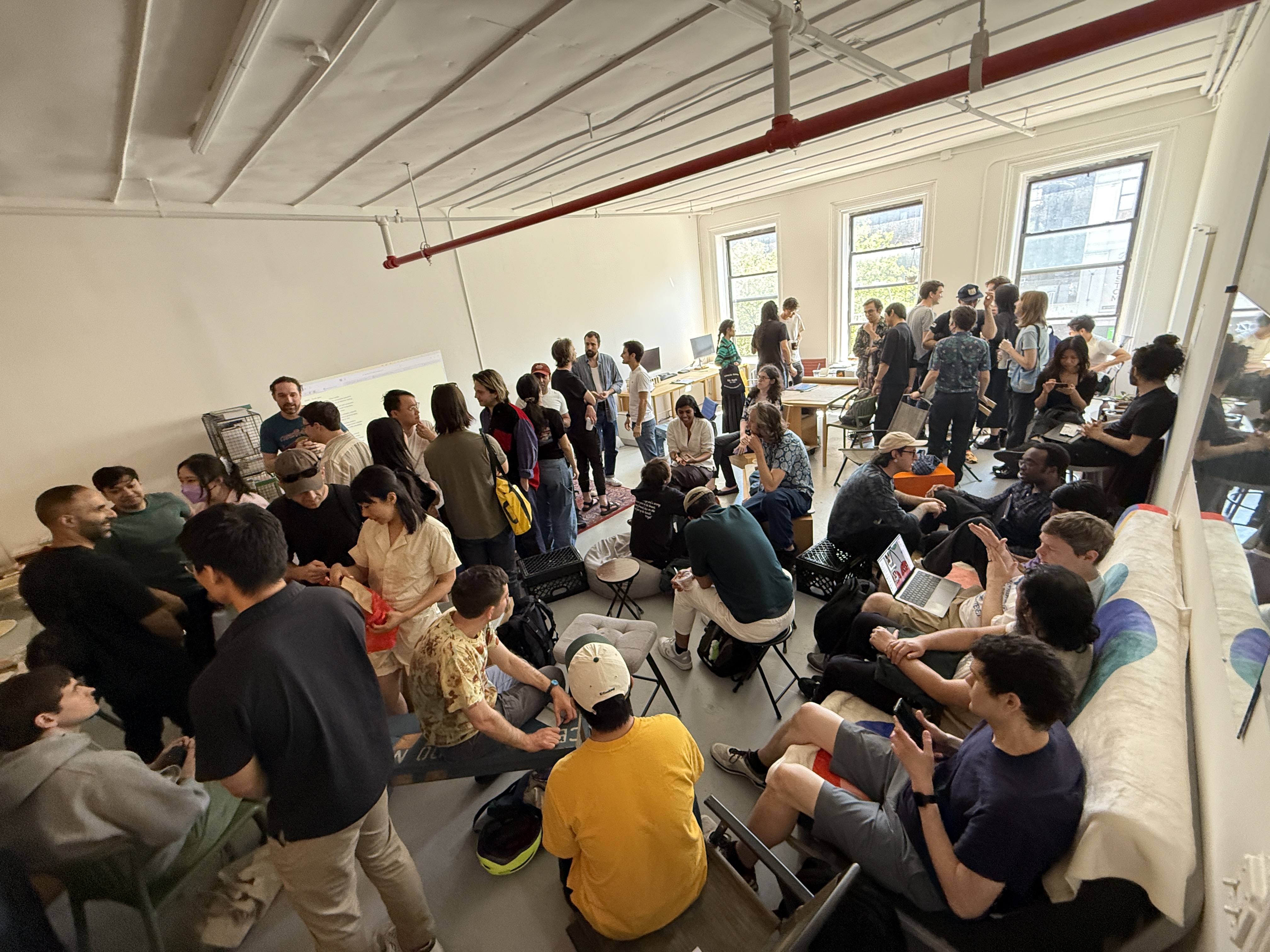Notes from Screenshot Conf!

Last Sunday, Omar and I hosted Screenshot Conf! at the Reduct office in New York City.
A variety of our past projects had been inspired by the screenshot as computational primitive. Screenotate hijacked the default MacOS screenshot flow to inject extra metadata and allow for textual search without losing the richness of images. Tableshots transposed the metaphor onto the tabletop as a means of capturing static traces of an otherwise interactive environment. Screenmatcher bypassed OS-level APIs by directly matching patterns on the framebuffer to overlay new grafitti-esque interfaces on any kind of app.
More generally, we noted screenshots as a dominant primitive in the workflows of our peers. Are.na was dominant among our friends as their means of digital archiving, giving screenshots a home beyond siloed desktops and mobile Photos apps. Screenshots of maps, directions, menus, and tickets felt more trustworthy than their computational counterpart, the share link. Composed screenshots built a bridge between Figma, Photoshop, online asset libraries, and formally constituted the aesthetic of, e.g. David Rudnick's digital collages. The hope for the conference was to bring together others with interesting thoughts, interfaces, or artworks which similarly took the screenshot as central.
As organizers, we were pleased and surprised by the diversity of attendees: video game people, 2000s programmers from #winprog on EFnet, gen Z graphic designers and meme account managers, media artists, and, of course, the "future of coding" crew. Screenshots proved to be a horizontal subject, unlike something like "digital poetics" or "local-first" which would've skewed the thematics in less open directions. Focusing directly on a material artifact served both as a way to hone in on what we perceived as a new sensibility in computing and prevent alienating different factions of that "new computing" scene.
During the opening of the conference, Omar honed in on the subversive nature of the screenshot. In popular computing, it circumvents the app siloes that define our contemporary digital ecosystems. A screenshot doesn't need a log in, bypasses DRMs, and is interoperable between practically every single computational device. Even in the "high-culture" of computing, where text is dominant, screenshots prove subversive. The screenshot is unstructured information which must be parsed to offer the tidy data best suited to computer hacking. They are seen as verbose and unwieldly, despite universal adoption. The Tao of Unix is text files, not bitmaps.
And yet, to imagine what an image-oriented computer might be seems to offer a new avant-garde for computing. Scott Kim's Viewpoint, a computer for visual thinkers, the macro-programming style of Forth, and Rob Pike's Acme sketch out an initial canon for visually-oriented software. (Here, I'm personally interested in folding in a history of modernist poetry, from Mallarmé to Augusto de Campos, the "verbivocovisual.") Devine Lu Linvega's recent multiset rewriting system Tote is an exemple of this trend in contemporary computing practice, along side the strand of research spanning from Alan Kay's Smalltalk to Bret Victor's Dynamicland, which today is manifest in Folk Computer.
One way the presentations from Screenshot Conf! differ and inform this new direction is a rejection of uniformity. The presentations, almost entirely done through screen sharing of a laptop or phone (replacing the powerpoint slide with ad-hoc swapping between windows and apps), tended to show screenshot as boundary object rather than element of a totalizing system. This mirrors Larry Wall's thoughts on Perl as a post-modern programming language, one that eschews seriousness and purity for interoperability, the "duct tape of the Internet." Screenshots are a kind of duct tape for media.
The laxness of what constitutes a screenshot (or, more generally, a bitmap) excites me as an archiving tool. A two-dimensional array of data can be represented digitally just as simply as it can physically, using a printer, handwriting, or by imprinting onto a clay tablet. Text of all kind is valid bitmap, even novel annotations that fall outside of standardized languages or unicode. Further, appropriately discretized drawings are also valid bitmap. Two-dimensional data facilitates sharing diagrams, a powerful form of information compression that is underserved by contemporary publishing tools.
When thinking about media that can survive millenia, I'm more confident in diagrams that communicate through visual patterns than in any kind of digital file format that depends on a working decoder to be visualized, or in a single language as the chosen vehicle for information. The Rosetta Stone, through visually paired symbols, transmitted distant languages in a redundant format that could be deciphered in the far future with minimal context. If computation is the execution of algorithms on structured data, then screenshots may prove naive. But if computation is the shepherding of information through space and time, then they may prove essential.
Abraço, Cristóbal
